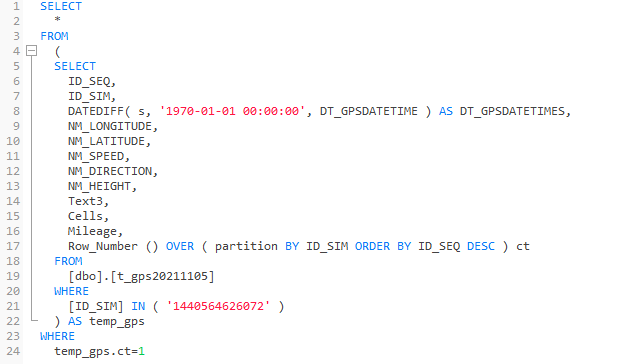前言
本文主要介绍的是基于centos7进行yum安装lnmp(linux+nginx+php7.1+mysql5.7)的相关教程,文中将一步步介绍的非常详细,下面话不多说了,来一起看看详细的介绍吧。
步骤如下:
yum的安装
yum update
yum安装nginx
安装nginx最新源
yum localinstall http://nginx.org/packages/centos/7/noarch/RPMS/nginx-release-centos-7-0.el7.ngx.noarch.rpm
yum repolist enabled | grep "nginx*"
安装nginx
yum -y install nginx
启动nginx
service nginx start
设置nginx服务器开机自启动
systemctl enable nginx.service
检查开机自动是否设置成功
systemctl list-dependencies | grep nginx
浏览器中输入公网ip,检测是否安装成功
http://00.00.00.00/
使用yum安装mysql5.7
安装mysql源
yum -y localinstall http://dev.mysql.com/get/mysql57-community-release-el7-7.noarch.rpm
yum repolist enabled | grep "mysql.*-community.*"
安装mysql
yum -y install mysql-community-server install mysql-community-devel
启动mysql
service mysqld start
检查mysql启动是否正常
service mysqld status 或者 ps -ef | grep mysql
设置mysqld服务开机自启动
systemctl enable mysqld.service
检查mysqld开机自启动是否设置成功
systemctl list-dependencies | grep mysqld
mysql5.7以后的争强了安全机制, 所以使用yum安装,启动会系统会自动生成一个随机的密码,修改mysql密码
查看mysql的随机密码
grep 'temporary password' /var/log/mysqld.log
使用查询得到的随机密码在终端登录
mysql -u root -p 更改密码(mysql文档规定,密码必须包括大小写字母数字加特殊符号>8位)
ALTER USER 'root'@'localhost' IDENTIFIED BY 'Yourpassword';
退出mysql客户端,用刚才修改的密码登录确保密码修改成功
exit;
mysql -u root -p
安装php7.1
安装php源
rpm -Uvh https://dl.fedoraproject.org/pub/epel/epel-release-latest-7.noarch.rpm
rpm -Uvh https://mirror.webtatic.com/yum/el7/webtatic-release.rpm
检查源是否安装成功
yum repolist enabled | grep "webtatic*"
安装php扩展源
yum -y install php71w php71w-fpm
yum -y install php71w-mbstring php71w-common php71w-gd php71w-mcrypt
yum -y install php71w-mysql php71w-xml php71w-cli php71w-devel
yum -y install php71w-pecl-memcached php71w-pecl-redis php71w-opcache
验证php7.1.x和扩展是否安装成功
验证php是否安装成功
php -v
验证对应的扩展是否安装成功
php -m
设置php-fpm并检测php-fpm的运行状态
启动php-fpm
service php-fpm star
检查启动是否成功
service php-fpm status
设置开机自启动
systemctl enable php-fpm.service
检查开机自启动是否设置成功
systemctl list-dependencies | grep php-fpm
ps -ef | grep php-fpm
nginx 配置文件详情
#启动子进程程序默认用户
#user nobody;
#一个主进程和多个工作进程。工作进程是单进程的,且不需要特殊授权即可运行;这里定义的是工作进程数量
worker_processes 1;
#全局错误日志的位置及日志格式
#error_log logs/error.log;
#error_log logs/error.log notice;
#error_log logs/error.log info;
#pid logs/nginx.pid;
events {
#每个工作进程最大的并发数
worker_connections 1024;
}
#http服务器设置
http {
#设定mime类型,类型由mime.type文件定义
include mime.types;
#
default_type application/octet-stream;
#日志格式
#log_format main '$remote_addr - $remote_user [$time_local] "$request" '
# '$status $body_bytes_sent "$http_referer" '
# '"$http_user_agent" "$http_x_forwarded_for"';
#$remote_addr与$http_x_forwarded_for用以记录客户端的ip地址;
#$remote_user:用来记录客户端用户名称;
#$time_local: 用来记录访问时间与时区;
#$request: 用来记录请求的url与http协议;
#$status: 用来记录请求状态;成功是200,
#$body_bytes_sent :记录发送给客户端文件主体内容大小;
#$http_referer:用来记录从那个页面链接访问过来的;
#$http_user_agent:记录客户浏览器的相关信息;
#全局访问日志路径
#access_log logs/access.log main;
#sendfile指令指定 nginx 是否调用sendfile 函数(zero copy 方式)来输出文件,对于普通应用,必须设为on。如果用来进行下载等应用磁盘IO重负载应用,可设置为off,以平衡磁盘与网络IO处理速度,降低系统uptime。
sendfile on;
#此选项允许或禁止使用socke的TCP_CORK的选项,此选项仅在使用sendfile的时候使用
#tcp_nopush on;
#长连接超时时间
#keepalive_timeout 0;
keepalive_timeout 65;
#开启压缩
#gzip on;
#配置虚拟主机 一个server一个网站
server {
#虚拟主机使用的端口
listen 80;
#虚拟主机域名
server_name localhost;
#虚拟主机支持的字符集
#charset koi8-r;
#虚拟主机的访问日志路径
#access_log logs/host.access.log main;
#定义web根路径
location / {
#根目录路径
root html;
#索引页
index index.html index.htm;
}
#error_page 404 /404.html;
# redirect server error pages to the static page /50x.html
#
#根据错误码 返回对应的页面
error_page 500 502 503 504 /50x.html;
#定义页面路径
location = /50x.html {
root html;
}
#定义反向代理服务器 数据服务器是lamp模型
# proxy the PHP scripts to Apache listening on 127.0.0.1:80
#
#location ~ \.php$ {
# proxy_pass http://127.0.0.1;
#}
#定义PHP为本机服务的模型
# pass the PHP scripts to FastCGI server listening on 127.0.0.1:9000
#
#location ~ \.php$ {
# root html;
# fastcgi_pass 127.0.0.1:9000;
# fastcgi_index index.php;
# fastcgi_param SCRIPT_FILENAME /scripts$fastcgi_script_name;
# include fastcgi_params;
#}
# deny access to .htaccess files, if Apache's document root
# concurs with nginx's one
#
#拒绝apache DR目录及子目录下的.htaccess文件访问
#location ~ /\.ht {
# deny all;
#}
}
# another virtual host using mix of IP-, name-, and port-based configuration
#
#server {
# listen 8000;
# listen somename:8080;
# server_name somename alias another.alias;
# location / {
# root html;
# index index.html index.htm;
# }
#}
#https的配置方案
# HTTPS server
#
#server {
# listen 443 ssl;
# server_name localhost;
# ssl_certificate cert.pem;
# ssl_certificate_key cert.key;
# ssl_session_cache shared:SSL:1m;
# ssl_session_timeout 5m;
# ssl_ciphers HIGH:!aNULL:!MD5;
# ssl_prefer_server_ciphers on;
# location / {
# root html;
# index index.html index.htm;
# }
#}
}
vhosts.conf
server{
listen 80;
server_name www.ixiaocui.com;
index index.html index.php;
root /home/wwwroot/blog;
#charset koi8-r;
access_log logs/ixiaocui.com.log main;
error_log logs/ixiaocui.com.error.log;
error_page 404 /404.html;
# redirect server error pages to the static page /50x.html
#
error_page 500 502 503 504 /50x.html;
location = /50x.html {
root html;
}
# Rewirte
location / {
index index.html index.php;
if (-f $request_filename/index.html){
rewrite (.*) $1/index.html break;
}
if (-f $request_filename/index.php){
rewrite (.*) $1/index.php;
}
if (!-f $request_filename){
rewrite (.*) /index.php;
}
}
# pass the PHP scripts to FastCGI server listening on 127.0.0.1:9000
#
location ~ \.php$ {
root /home/wwwroot/blog;
fastcgi_pass 127.0.0.1:9000;
fastcgi_index index.php;
fastcgi_param SCRIPT_FILENAME $document_root$fastcgi_script_name;
include fastcgi_params;
}
# deny access to .htaccess files, if Apache's document root
# concurs with nginx's one
#
location ~ /.ht {
deny all;
}
}
